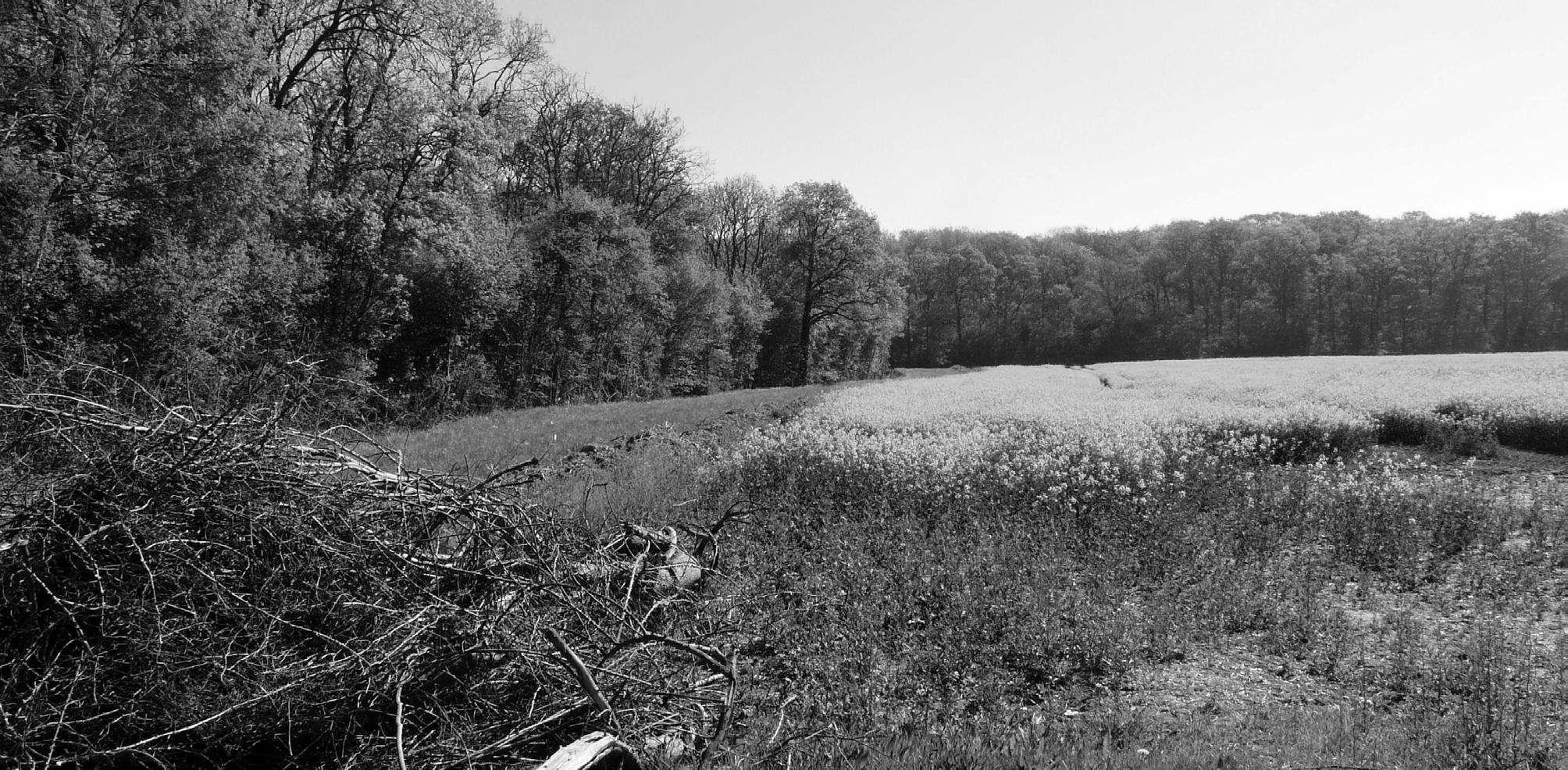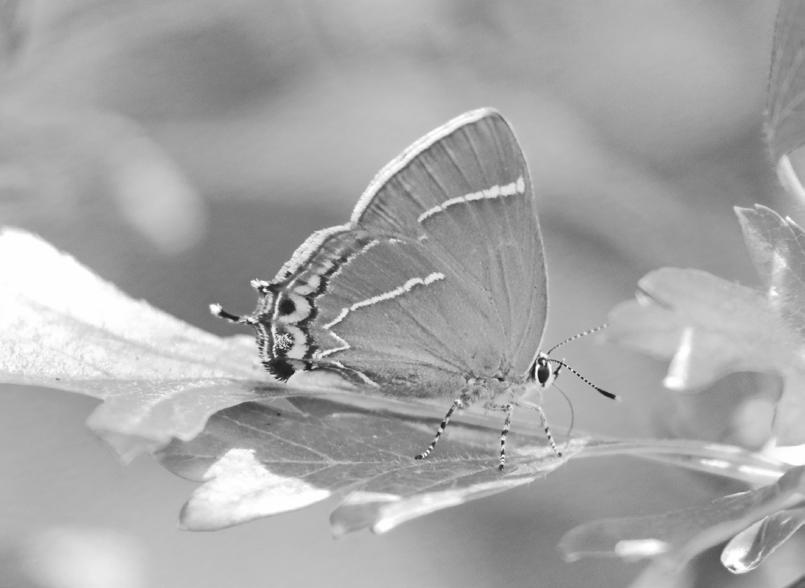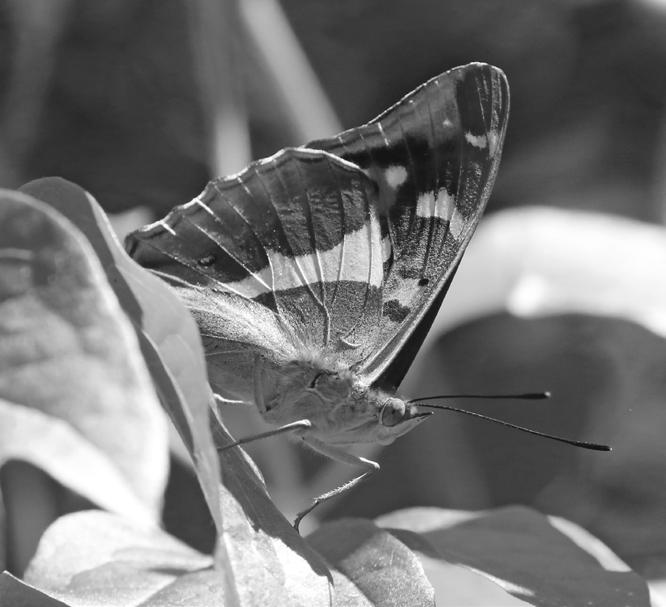
3 minute read
The 2018 AGM Peter Maddison
Thank you to Rougham and Bramfield farm recorders.
Juliet Hawkins
Rob Parker and Trevor Goodfellow kindly responded to my 2018 spring call-up for volunteers to carry out two transect surveys over an area of woodland and mixed farmland for the Rougham Estate Trust www.roughamestatetrust. org within flying distance of Bradfield Woods National Nature Reserve. Both transects took in an area where Suffolk Bat Group has carried out a bat survey, and Suffolk Wildlife Trust (SWT) volunteers, Dorothy Casey and I, have done a woodland plant survey in 2018. An excellent total of 26 butterfly species were recorded, representing 75%+ of Suffolk’s 34 butterflies that have regularly occurred in Suffolk during the last five years i.e. 2013-2017. This includes four of Suffolk’s priority species, notably Small Heath, White Admiral (page 28), White-Letter Hairstreak and Silver-Washed Fritillary (page 28), together with some elusive treetop species that most of us casual observers would miss - Purple Hairstreak and Purple Emperor. One notable exception to the expected species was the absence of the Essex Skipper which is a widespread species that has undergone an 88% decline in abundance between 1976-2014.
Rob and Trevor’s excellent survey information, which reflected subtle differences in habitat quality, combined with SWT’s plant survey, provided very useful pointers for the estate’s habitat management and long-term woodland management plan. SWT’s final report includes many recommendations but primarily the importance of really wide, sunny, scalloped, shrub-edged woodland rides; woodland management to favour specific larval foodplants – honeysuckle for White Admiral and common dog violet for the Silver-Washed Fritillary; the
Free wood southern edge field margin towards Mellfield wood


White-letter hairstreak by Trevor Goodfellow Purple emperor by Trevor Goodfellow
need to keep healthy elm habitat going strong with rotational coppicing and possibly planting of disease-resistant elms in some key, sensitive places; and the provision of more nectar-rich margins on arable field edges. We hope to carry out a similar survey for another part of the estate in 2019 but this first survey is most useful in providing baseline information from which to measure the success of implementing a woodland management plan that aims to improve the ancient and other estate woodland for a variety of wildlife. Whilst hot and wearisome on some survey days, seeing 60 Silver-Washed Fritillary on one summer’s day is surely a treat for any surveyor’s eyes! Trevor Goodfellow’s wonderful photos are an inspiration for all involved – and hopefully gave some reward for the time spent surveying!
Andrew Leng volunteered to take on a transect on a newly purchased small farm in Bramfield where Suffolk Wildlife Trust is working with a cluster of farmers who wish to ensure their efforts for wildlife are maximised – and success can be measured. The paucity of butterfly records on Andrew’s baseline transect in 2018 is equally important to record as long exciting lists. Hopefully, the new owner will be inspired by the return of butterflies, from adjacent sympathetically managed farmland, once wildflower margins have been established, pollen and nectar mixes sown, sympathetic mowing regimes have been implemented and scrub-grass mixes allowed to regenerate where there was previously none.
Thank you so much to these BC volunteers for their time spent this summer. And thank you also for the use of Suffolk BC’s information-filled website and especially the online distribution maps which made for so much more meaningful and visual interpretation of the survey data. If any BC member wishes to volunteer for doing survey work, do get in touch with me, Juliet Hawkins, and if there is a farm nearby, we can partner you up with, we will!
Juliet Hawkins Farm conservation adviser for Suffolk Wildlife Trust Hawkins@thehall-milden.co.uk 01473 890089 (SWT)






